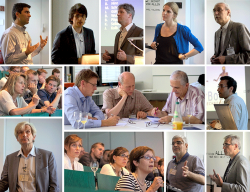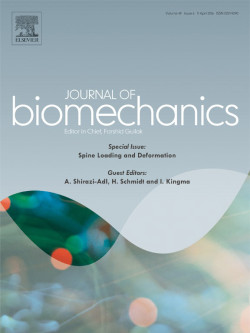1st Workshop 2015, Berlin
 After a year of planning the 1st international workshop on spine loading and deformation, organized by Hendrik Schmidt and Aboulfazl Shirazi-Adl, materialized with a total of 75 participants from 14 countries around the globe at Julius Wolff Institute of Charité – Universitätsmedizin Berlin during 3 days of July 2-4, 2015.
After a year of planning the 1st international workshop on spine loading and deformation, organized by Hendrik Schmidt and Aboulfazl Shirazi-Adl, materialized with a total of 75 participants from 14 countries around the globe at Julius Wolff Institute of Charité – Universitätsmedizin Berlin during 3 days of July 2-4, 2015.
The objective of the workshop was set to bring together researchers working in different related disciplines and fields of application in health care, biological sciences, biomechanics and ergonomics in order to share, discuss and explore the potentials of their research works on spine. The topics centered around measurements and computations of trunk loads and motions in static and dynamic activities with the focus on the lumbar and thoracic spines. 
More than 50 renowned experts were initially contacted. Submitted abstracts were evaluated and authors of accepted ones were invited to both present their work at the meeting and submit an original paper for consideration in a special issue of the Journal of Biomechanics. In total 33 talks were presented and 25 research papers accepted for publication in the special issue.
Journal of Biomechanics, SI: Spine Loading and Deformation,
Volume 49, Issue 6, Pages 813-982 (11 April 2016),
Edited by A. Shirazi-Adl, H. Schmidt and I. Kingma
The meeting ended with a podium discussion on four topics selected based on relevance to the materials presented at podium:
(1) What does the medical devices industry expect from spine biomechanists? Appropriateness of testing criteria and their dependence on the patient age, condition and lifestyle were discussed as related to the evaluation of relative safety and effectiveness of products.
(2) How accurately should we replicate in vivo physiological conditions in vitro? Issues on appropriateness of animal models, intact normal specimen versus degenerate and injured ones, preconditioning and specific objective of in vitro tests were debated.
Idsart Kingma and Albert van der Veen in discussion with the audience (Video: click to open, ~100MB)
(3) What is the role of the disc annulus interlaminar interface in disc function and failure? The crucial effects of ageing, disc-endplate interface, fluid content and nucleus pressurization were discussed.
Hendrik Schmidt and Michael Adams in discussion with the audience (Video: click to open, ~110MB)
(4) How to make full subject-specific trunk musculoskeletal models? Different aspects, from kinematics to material/structural properties and geometry, and the potential of various established and emerging technologies in providing the datasets needed both as input and for validation were discussed.